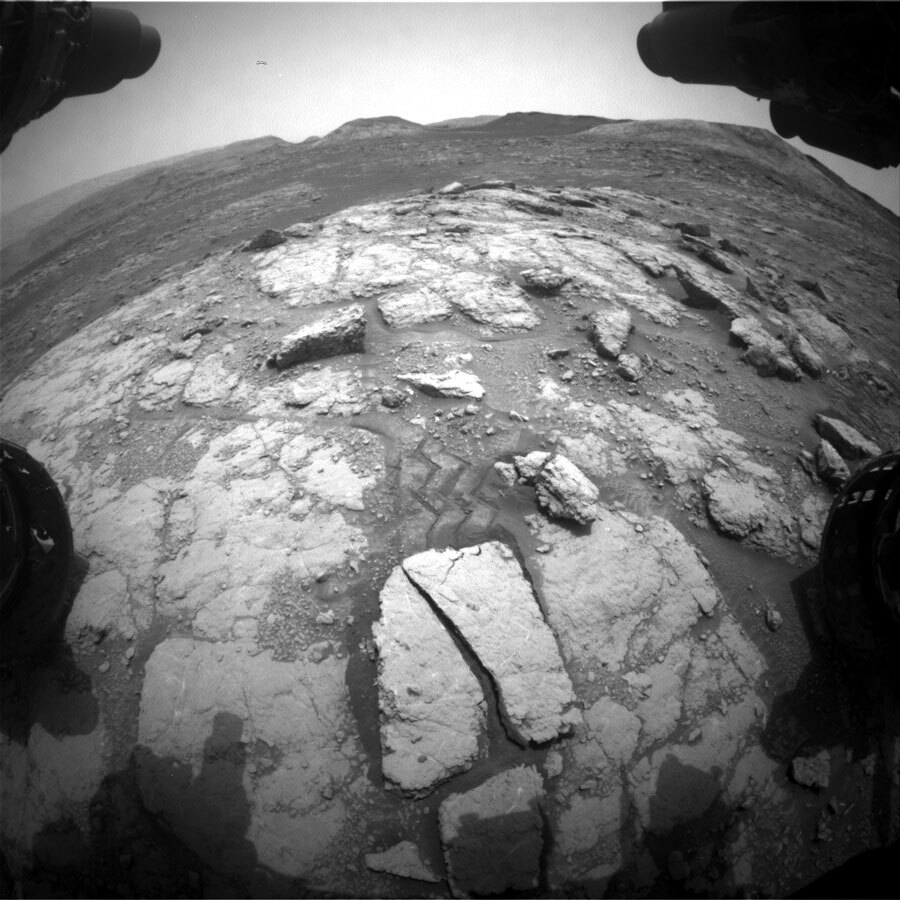2 min read

We returned to nominal planning this morning after successfully upgrading Curiosity’s flight software. The drive today should take Curiosity a little to the north and east, towards our first planned stop on our summer road-trip to the sulfate-bearing unit. In order to preserve as much drive time and distance as possible, we kept the science activities relatively short and sweet.
Prior to the drive, Curiosity will acquire a ChemCam compositional analysis of the typical bedrock exposure in the workspace (“Bow Fiddle”), as well as two Mastcam mosaics of the eastern-most exposures of the Greenheugh Pediment, which we plan to visit later in the mission.
Following the drive, the ChemCam instrument will capture the chemistry of the rocks in the new workspace, using its autonomous targeting capabilities. The remaining post-drive science activities will be devoted primarily to environment and atmospheric monitoring, which are particularly important during Mars’ current dusty season. These will include a large Navcam dust devil survey, a Navcam deck survey, Mastcam full tau imaging towards the sun and a Mastcam sky survey.
A post-drive MARDI science block to monitor the ground beneath Curiosity’s wheels, as well as standard REMS, RAD and DAN activities round out our return to nominal planning.
It has been a quiet day for me as the APXS strategic planner, as we maximize driving for distance on our summer road-trip. However, I am looking forward to Curiosity being able to stretch her arm over the weekend, to touch the rocks, and hopefully document the chemistry and textures with the contact science instruments (APXS and MAHLI).
Written by Lucy Thompson, Planetary Geologist at University of New Brunswick







